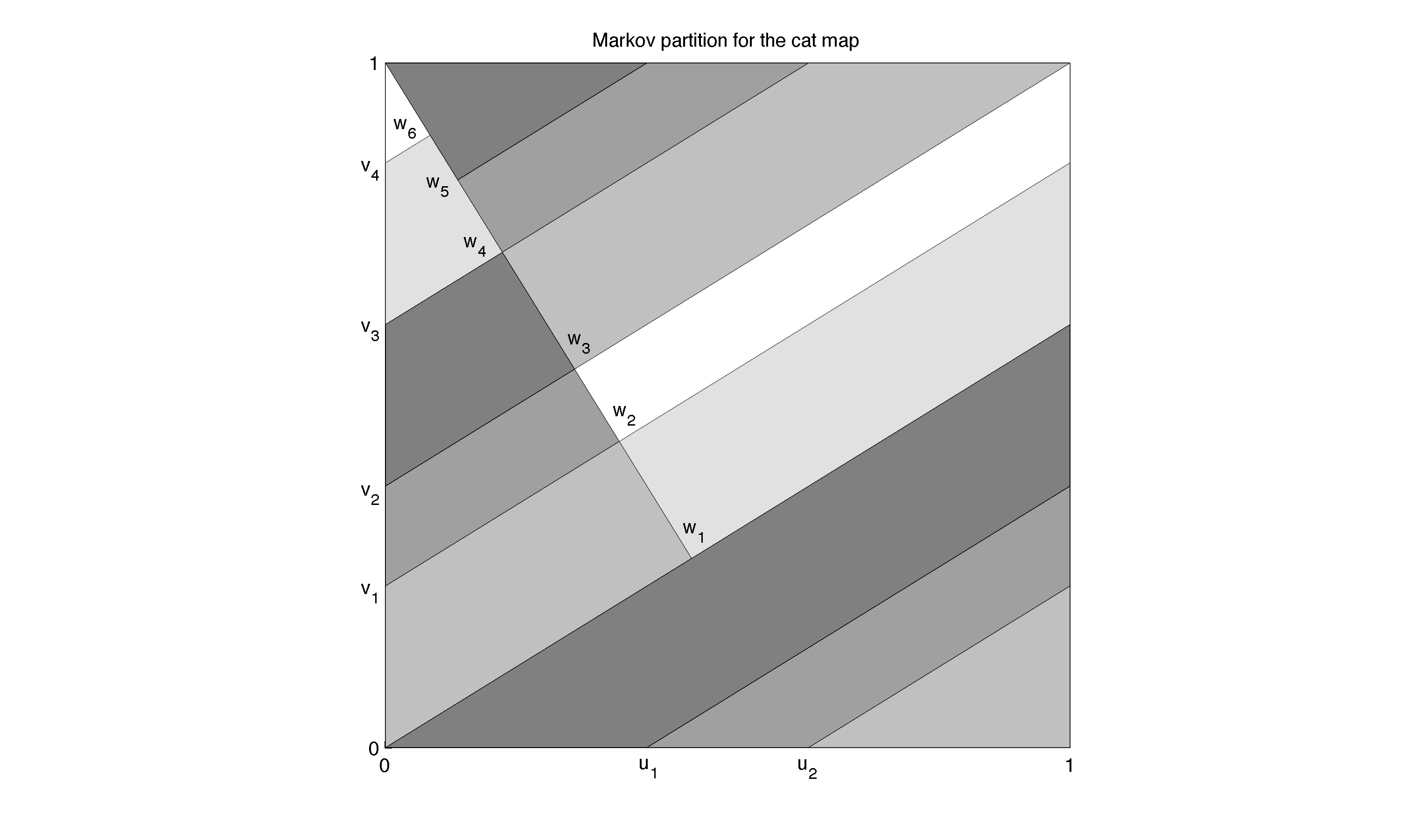I've noticed a rather strange phenomenon (not important for my particular research, but interesting) and wouldn't be surprised if someone more versed in symbolic dynamics (i.e., just about anyone who knows what those words mean together) could easily explain it.
Consider the cat map $A$ and the Markov partition $\mathcal{R} =$ {$R_1,\dots,R_5$} shown below:  The rectangles in the partition are numbered from 1 (darkest) to 5 (lightest).
The rectangles in the partition are numbered from 1 (darkest) to 5 (lightest).
Now for a given initial point $x$ with rational coordinates (so that the period $t(x)$ of the sequence $A^\ell x$ is finite) consider the matrix $T(x)$ with entries $T_{jk}(x)$ equal to the cardinality of {$\ell < t(x): A^\ell x \in R_j \land A^{\ell + 1}x \in R_k$}, i.e., the number of times per period that the trajectory goes from the $j$th rectangle to the $k$th rectangle. Clearly the sparsity pattern of $T(x)$ is inherited from the matrix defining the corresponding subshift of finite type.
Let $L_q$ denote the set of rational points in $[0,1)^2$ with denominator $q$. When I compute the sum $T_{(q)} := \sum_{x \in L_q} T(x)$ I get some surprising near-equalities. For instance, with $q = 240$ I get
301468 0 301310 186567 0 186567 0 186407 114903 0 301310 0 301251 186407 0 0 301470 0 0 186407 0 186407 0 0 115060 and when $q = 322$ I get
262625 0 262624 162291 0 162291 0 162312 100312 0 262624 0 262632 162312 0 0 262603 0 0 162312 0 162312 0 0 100312 The entries of each matrix are bunched around 3 values. What's more, the stochastic matrices obtained by adding unity to each entry and then row-normalizing agree to one part in a thousand.
Is there a (simple) explanation for this?
